A Photo Portfolio
To see more of Amos Nachoum’s photography, visit BigAnimals.com
Click each photo below for a larger preview.
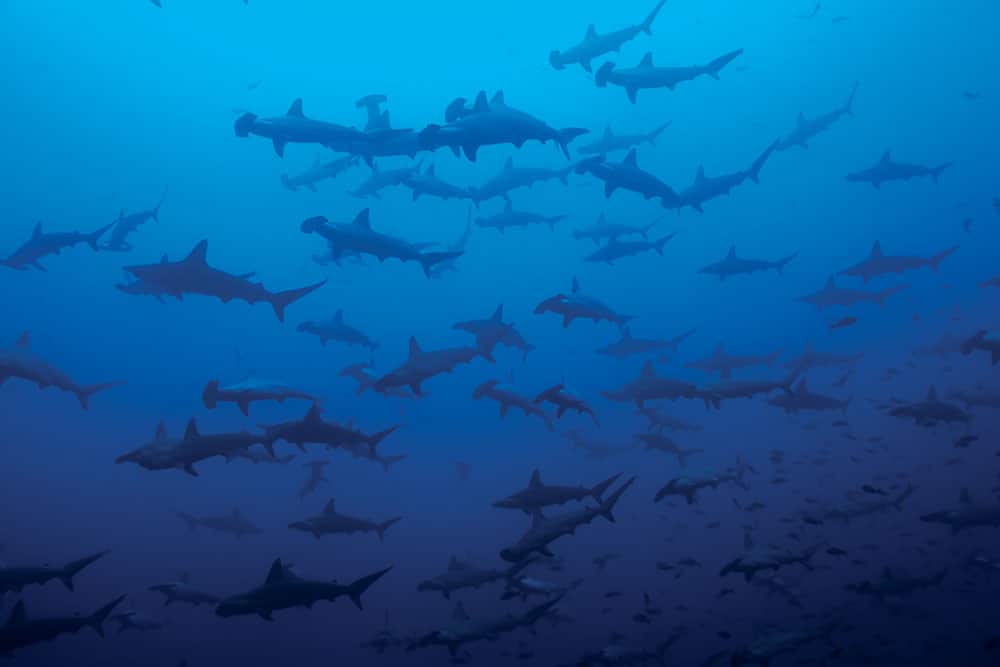
Hammerhead Shark: The schooling phenomena of the hammerhead is still not clear to science, but it is an event that attracts many ocean lovers to Cocos Island and the Galapagos. 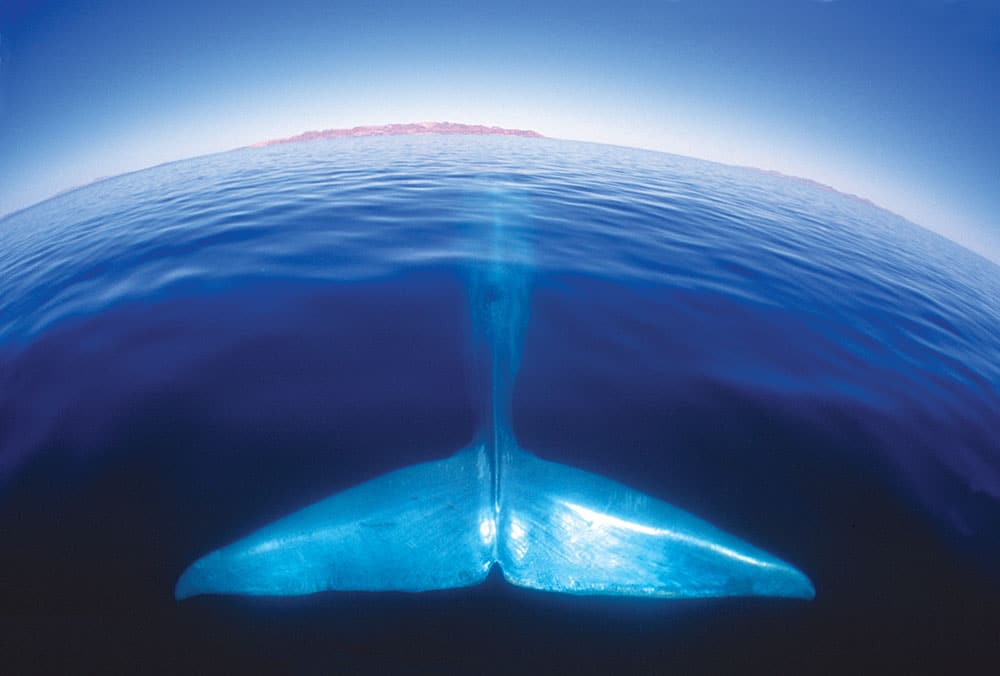
The Tail of a Blue Whale: The largest animal to live on our planet, blue whales
can reach a length of 100 feet and a weight
of 280 tons. Its heart is as big as a small car, and its tail is over 20 feet across. I snapped this shot as the whale slept on the surface.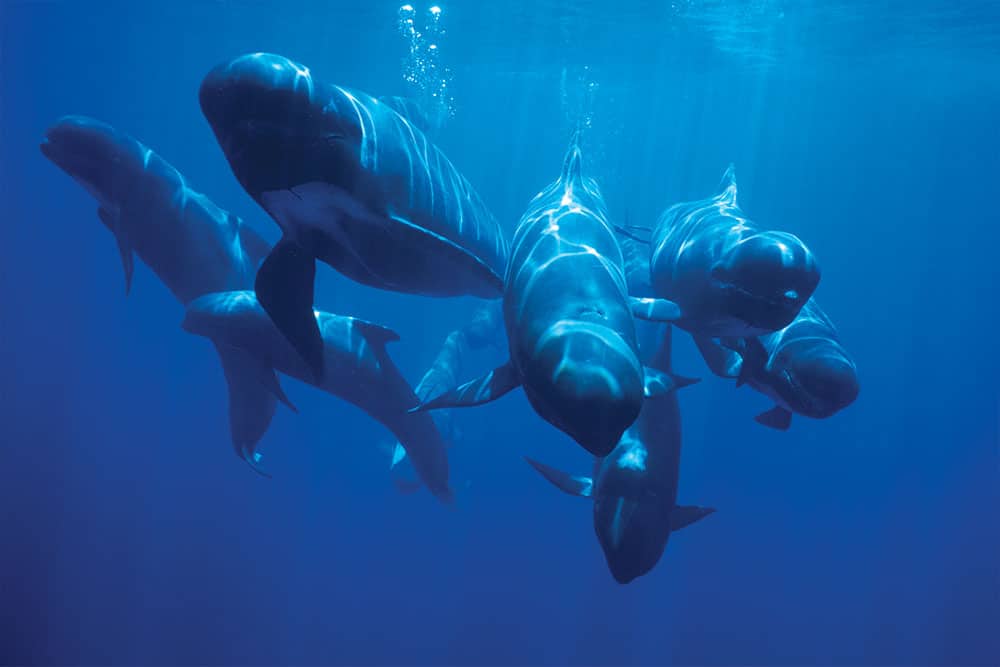
Pilot Whale Pod: These mammals travel and socialize in big groups, which is different compared to other whales. These pods can become so large that they can chase away pods of larger Orca. 
Mobula Rays: These rays are small, only 3 to 4 feet wide, but they arrive in the thousands
to feed in the rich waters off Baja. This pattern of wildlife is mesmerizing to the eye, but it was a challenge to get under the mob.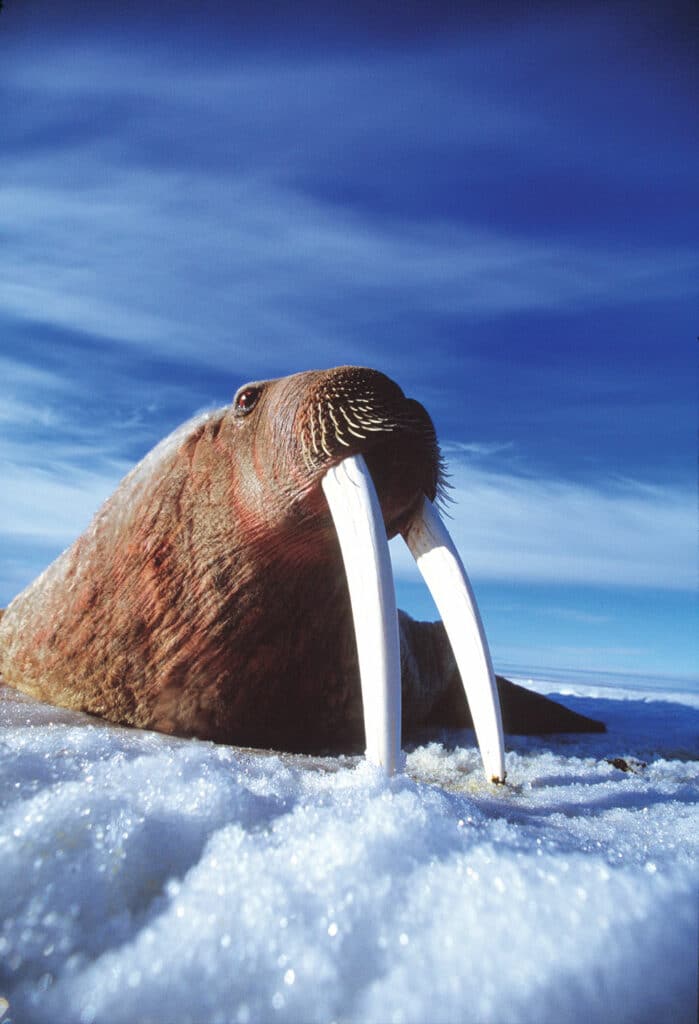
Lone Walrus: This old male, around 80 or 90 years old, knew it was the end of his life
and left the colony to die alone.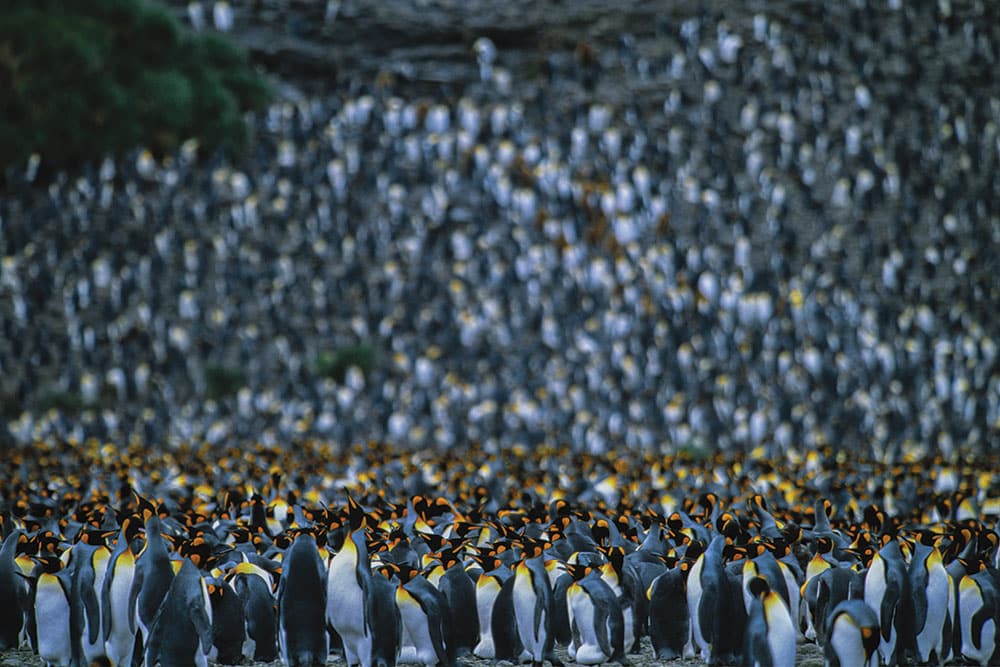
King Penguins: A group of around 250,000 penguins gather on the Salisbury Plain on South Georgia Island near the artic. They are wonderfully colored, but it can be a bit smelly and noisy. 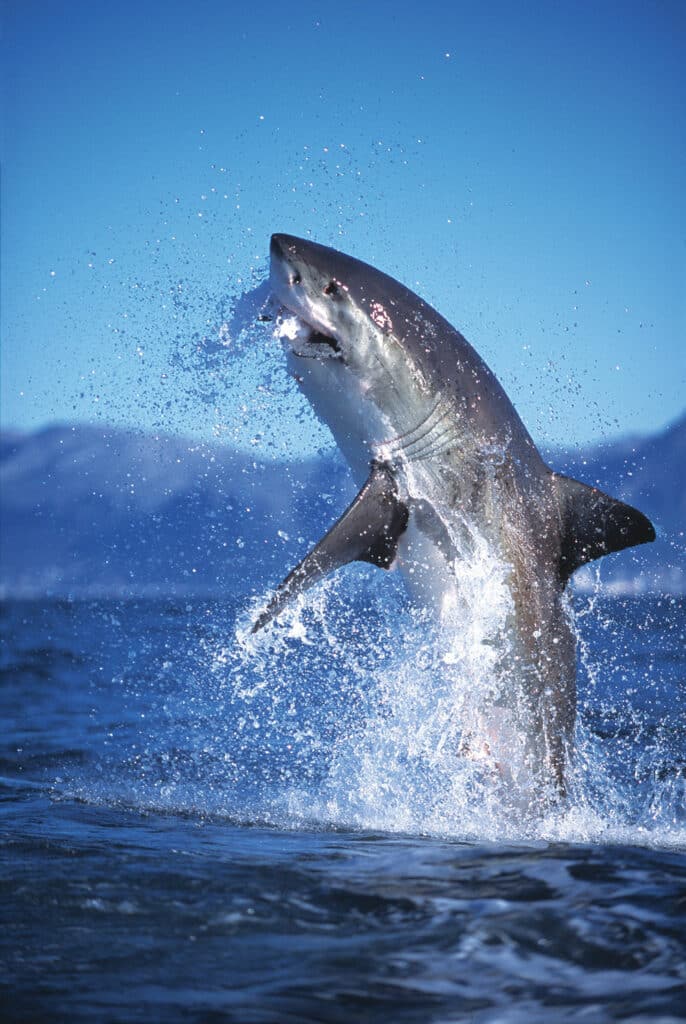
Breaching Great White Shark: In addition to having powerful jaws, the great white shark has the ability to ambush seals by leaping out of the water. This activity takes place only in the early morning and late afternoon, when the angle of the sun over the horizon is so small that the amount
of light entering the water is limited.
Bengal Tiger: India is doing good work to protect the
dwindling habitat of the Bengal tiger. The creation of the national park and
an investment in ecotourism will support the current tiger population for
future generations.
Walrus and Calf: Although walruses are big and heavy, they are amazing divers and, like all mammals, will tenderly care for their young. 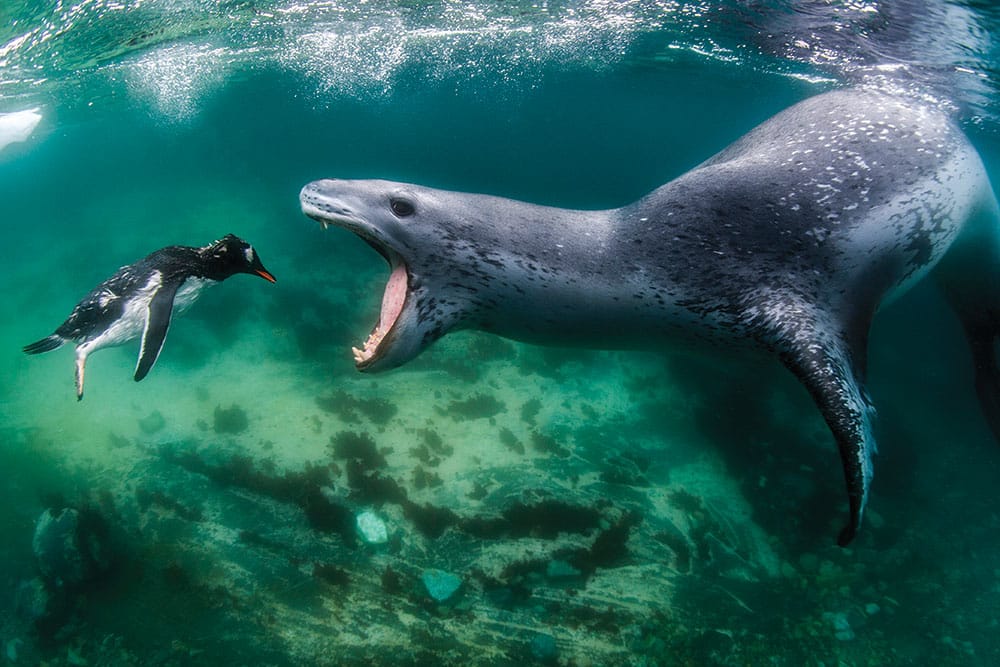
Leopard Seal and Gentoo Penguin: Leopard seals in Antarctica prey on penguin in a very elaborate way. First they snatch them from a shallow lagoon, carry them into deep water to drown them, let them go, chase them again on shore, catch the penguin, then do the entire process all over again. 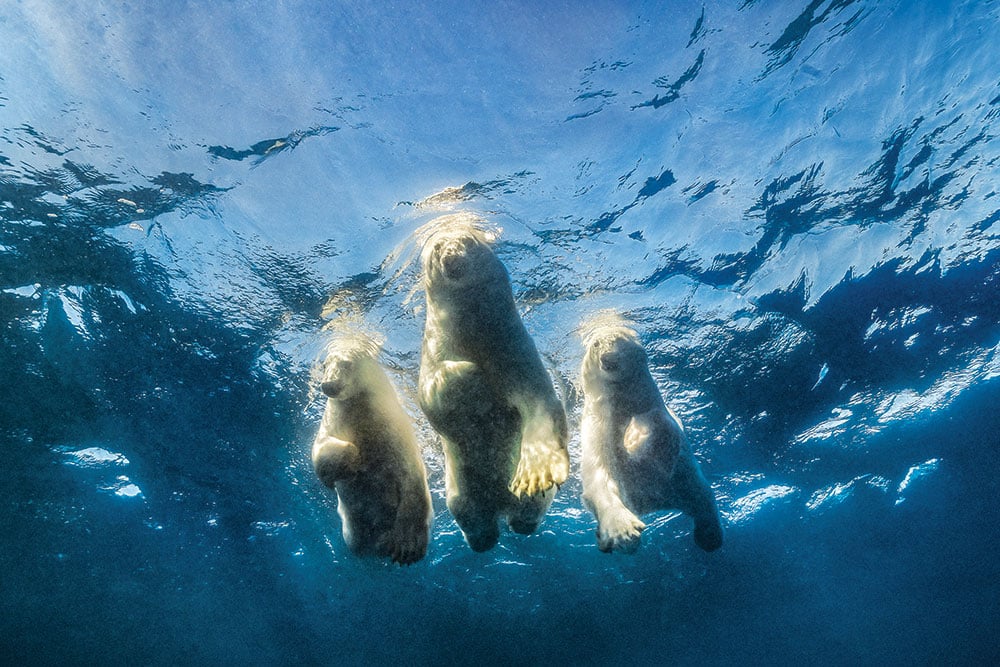
Polar Bear Family: I spotted this family of polar bears off in the distance as they swam from one iceberg to the next. To get the shot, I stayed in one place treading water before the curious family came out for a visit. 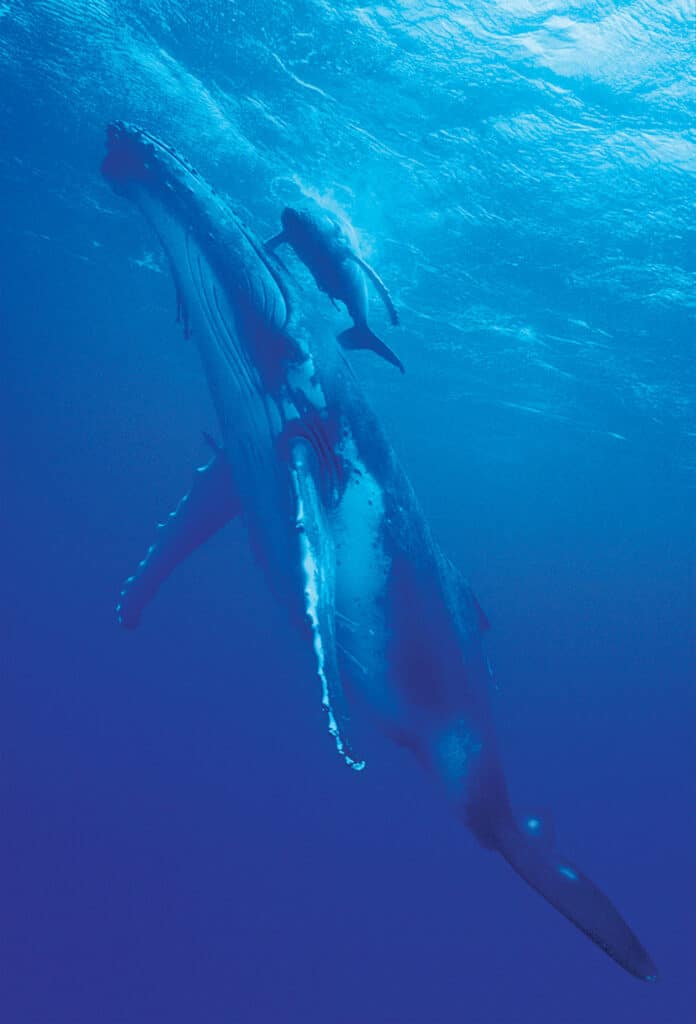
Humpback Whales:A mother humpback whale swims with her calf in the warm and clear waters off Tonga. This 45-foot long mother helps her week-old newborn to the surface to help it breathe more easily. 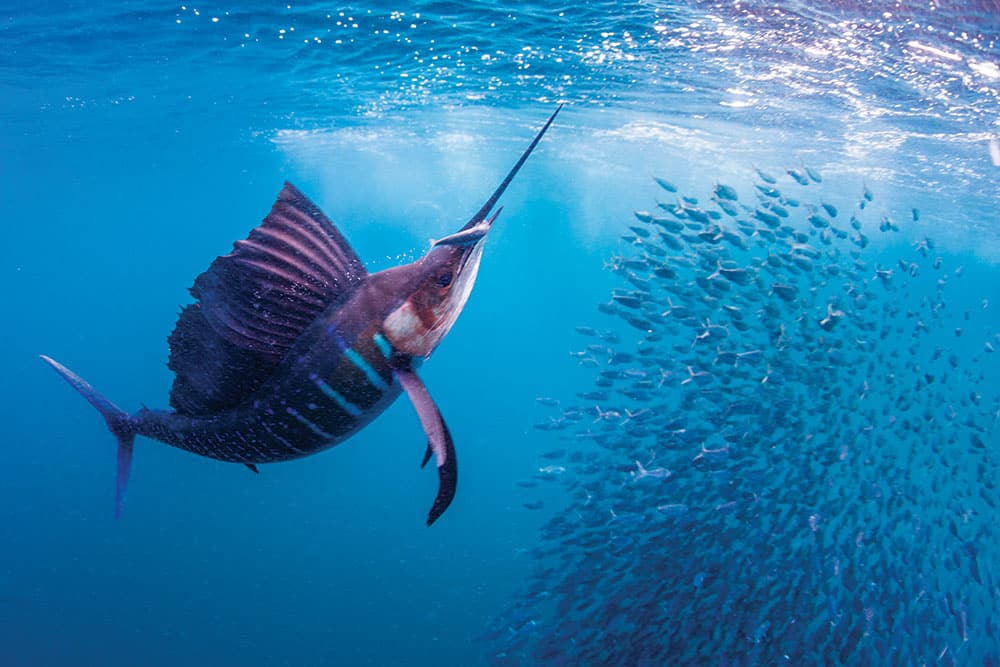
Sailfish Predation: Once a year, between January and March, sailfish arrive off the coast of the Yucatan peninsula to feed on the Brazilian sardine. The event is fast, colorful, demanding — and greatly rewarding. 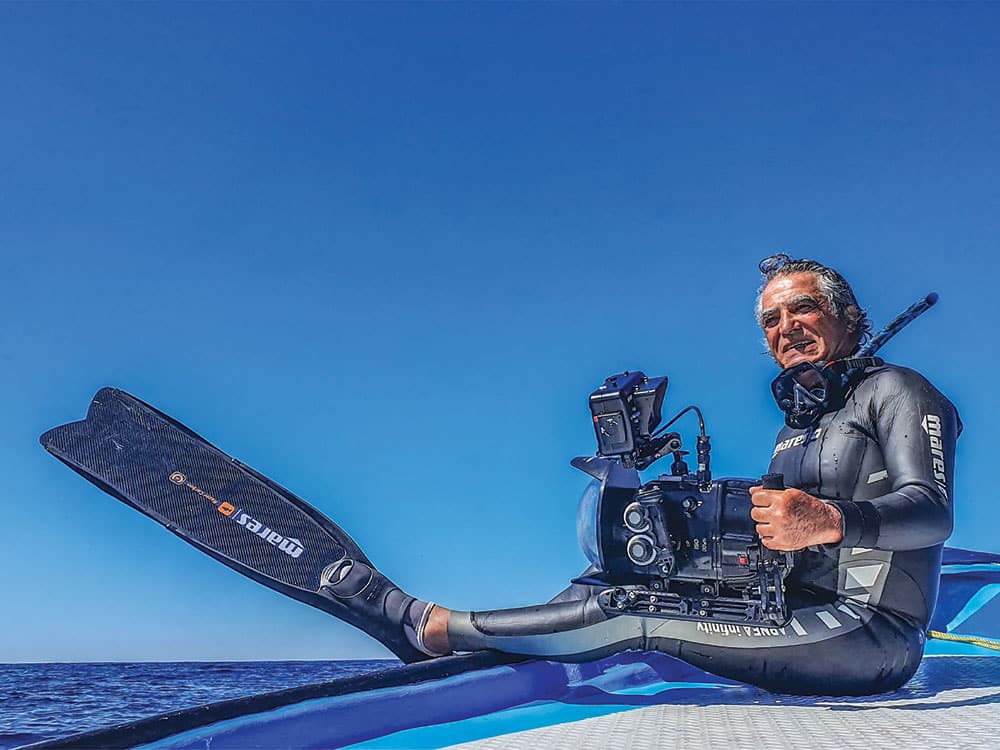
Amos Protract: With my Red camera in hand, I have dedicated my career to documenting the life of threatened and endangered wildlife, both for preservation and for conservation. 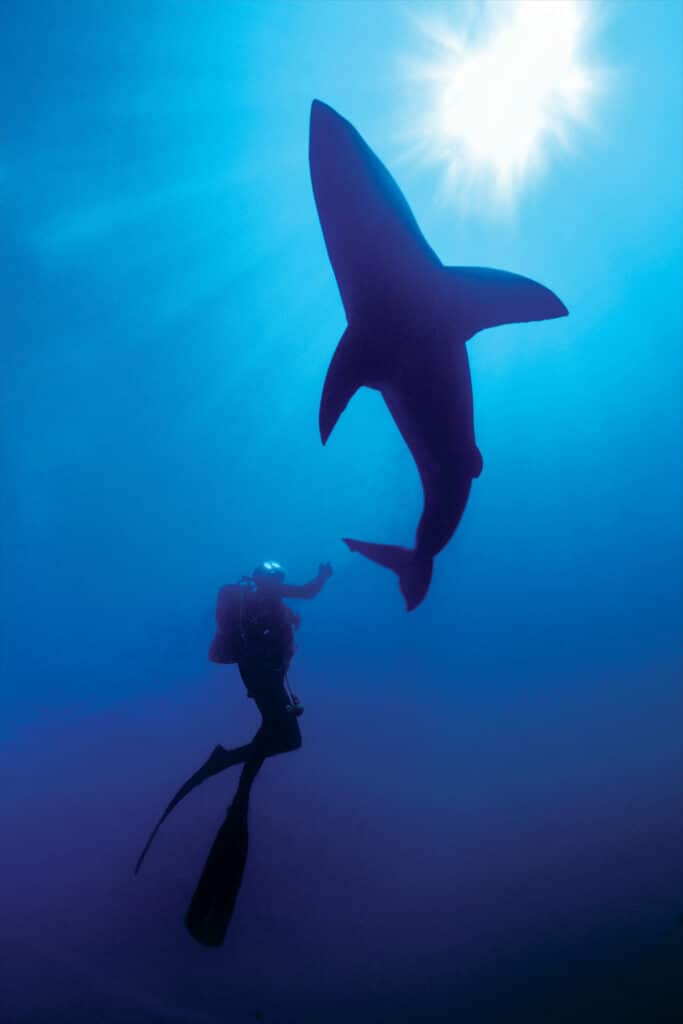
Great White Shark and Diver: Legendary great white shark wrangler Andre Hartman and I take a safe and free dive outside the cage in South Africa.



















